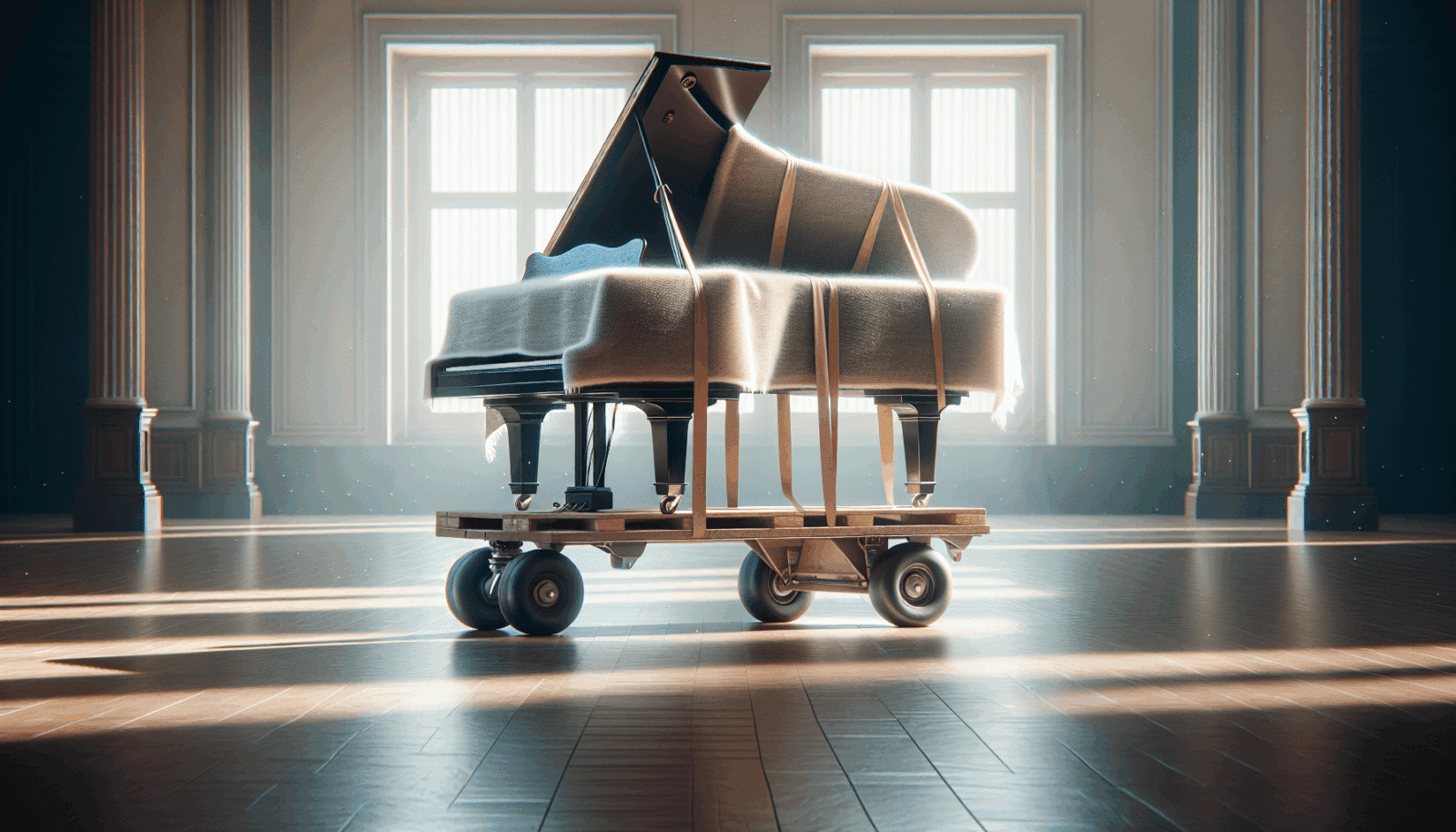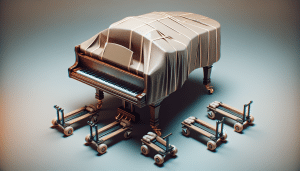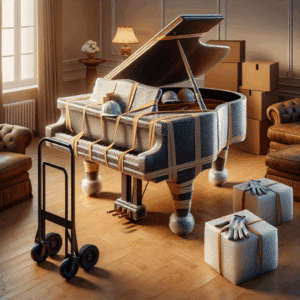Moving a piano can be daunting due to its weight, size, and delicate nature. However, with the right know-how and guidance, transporting your cherished instrument doesn’t have to be an uphill battle. That’s where we, Utah Piano Movers, step in! In this blog post, we will walk you through the entire process, providing our pro tips for a safe and easy piano move. Whether you’re moving to a new home or just rearranging, this guide is your go-to resource to ensure your piano arrives unharmed and in perfect tune.
Contents
- 1 Understanding Your Piano: Know Your Instrument
- 2 Essential Tools for a Safe Move
- 3 Assembling Your Team: Don’t Go It Alone
- 4 Mapping Out Your Route: Plan Ahead
- 5 Disassembling the Piano Safely
- 6 Properly Wrapping Your Piano
- 7 Utilizing the Right Lifting Techniques
- 8 Navigating Stairs and Tight Corners
- 9 Loading the Piano into the Moving Vehicle
- 10 Reassembling and Positioning at the Destination
Understanding Your Piano: Know Your Instrument
Before moving your piano, it’s important to understand the specific type you have. There is an array of pianos, including grand, baby grand, upright, and digital, and each requires distinct handling techniques. Grasping the basic details, such as the weight and dimensions, helps in planning a successful move.
Each piano is unique in its design and construction, which means knowing the intricacies can prevent potential damage during relocation. For instance, the legs of a Grand Piano are particularly fragile and require meticulous care during disassembly. Understanding these nuances ensures your piano is protected throughout the move.
Essential Tools for a Safe Move
Much like any job, moving a piano is easier with the right tools. Investing in high-quality equipment not only makes the task smoother but also safeguards against damage, both to the piano and your home. You’ll need items like furniture sliders, a piano dolly, moving straps, and plenty of padding materials.
Having these essentials helps in securely wrapping and moving the piano. It’s vital to plan and ensure you have all necessary equipment assembled before you begin the relocation process. Nothing’s worse than scrambling for missing tools when you’re halfway through moving a 700-pound instrument!
Assembling Your Team: Don’t Go It Alone
Never attempt to move a piano single-handedly. Enlist the help of at least three other strong, reliable individuals to assist you. With the weight and awkward shape of most pianos, having extra sets of hands is crucial not only for the heavy lifting but also for guiding and spotting potential hazards along the way.
Communicating efficiently with your team is key. Make sure everyone knows their role and what to expect during each phase of the move. This not only eases the task but also reduces the likelihood of damaging your piano or hurting yourself in the process.
Mapping Out Your Route: Plan Ahead
Before you begin moving your piano, it’s critical to plan your route carefully. Map out the path from the starting point to the final destination, paying close attention to doorways, staircases, and tight corners. Remove obstacles and clear a wide path to smooth the moving process and avoid bumps and scratches.
This planning stage is pivotal in preventing last-minute hitches. Take measurements of both your piano and doorways to ensure access and eliminate any surprises that might occur mid-move. Proper preparation keeps the move efficient and stress-free.
Disassembling the Piano Safely
For grand and baby grand pianos, partial disassembly may be necessary. Begin by carefully detaching the legs, pedals, and music stand. Ensure all parts are meticulously labeled to simplify the reassembly process later. Remember, each component is crucial to the piano’s structure and function.
Handle these parts with extreme care because they are often fragile. Wrap them securely in bubble wrap or moving blankets to protect them during transit. Safely storing removed parts also ensures that nothing goes missing when it’s time to reassemble.
Properly Wrapping Your Piano
Wrapping your piano properly cannot be overstated. It is crucial in preventing damage from scratches and bumps. Use thick moving blankets or pads to envelop your piano fully. Secure the blankets in place with straps or packing tape, ensuring they stay tightly bound during the move.
For those intricately carved legs and parts, extra padding might be required. Protecting delicate components goes a long way in maintaining your piano’s pristine condition throughout its relocation journey. It’s always better to be overly cautious than to see your prized instrument suffer harm.
Utilizing the Right Lifting Techniques
When it comes time to lift the piano, using proper techniques is vital to prevent injury. Bend at the knees and keep your back straight, lifting with your legs rather than your back. With a coordinated effort, lift the piano onto the dolly carefully to maintain balance and control.
Always lift smoothly and in unison, with team members communicating throughout. Never rush this step, as haste can lead to accidents. Ensuring everyone is on the same page makes the lifting process safer and more efficient.
Stairs and narrow hallways are significant challenges when moving a piano. Whether going up or down stairs, take it slow; ensure all helpers are confidently positioned to bear the load evenly. Use a piano board and straps to control the descent or ascent carefully.
Corners require precise maneuvering and clear communication from everyone involved. Gently pivot the piano, ensuring it’s never scraping against walls or door frames. Mastering stair and corner navigation marks the difference between a flawless move and a problematic one.
Loading the Piano into the Moving Vehicle
Loading the piano onto the moving truck might be the trickiest part of the operation. Position the truck near a flat, stable surface, and use a ramp if possible. Secure the piano inside the truck to prevent rolling or tipping during transit.
Utilizing ropes or straps to fix the piano in place is crucial. Make sure to lock the wheels of the piano dolly to keep everything stationary. A secure load guarantees your piano will arrive at its destination without incident.
Reassembling and Positioning at the Destination
Once you’ve arrived at your new location, it’s time to carefully reassemble the piano. Connect all previously removed parts and double-check everything for stability. Now that your piano is back together, finding the right spot for it involves more than aesthetics.
Consider factors like temperature, humidity, and sunlight exposure. Ideal positioning affects tuning and longevity, so choose wisely. Revel in your accomplishment, as your piano is now safely relocated and ready to grace its new home.
Finally, if the thought of moving your piano alone seems overwhelming, remember that Utah Piano Movers is just a call away. Contact Us at 801-396-7323 or Request a Free Quote today!




